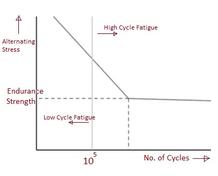Stress vs. Strain: Understanding the Key Differences
Advertisement
This article will explore the concepts of stress and strain, two fundamental ideas in mechanics and materials science. We’ll break down their definitions, differences, and how they relate to each other, using the example of a metal bar under tension and compression.
Tension and Compression: Setting the Stage
Imagine a metal bar, like the one shown in Figure 1. Now, let’s consider what happens when we apply forces to it:
-
Tension: When you pull on the bar with a force (T), you’re creating tension. This force tries to elongate the bar, stretching it along its length. Think of pulling a rubber band – that’s tension in action.
-
Compression: Conversely, if you push on the bar from both ends, you’re applying a compressive force. This force will try to shorten the bar. Imagine squeezing a sponge – that’s compression at play.

Figure 1: A visual representation of stress and strain.
Defining Stress
-
What it is: Stress is the internal resistance a material offers to an external force. In simpler terms, it’s the force acting on a unit area within a material.
-
How it’s measured: Stress (often denoted by the Greek letter σ) is calculated using the following formula:
σ = T/A
Where:
- σ is the stress
- T is the applied force (in Newtons)
- A is the cross-sectional area of the material (in square meters)
-
Units: Stress is typically measured in Pascals (Pa) or Newtons per square meter (N/m²).
Defining Strain
-
What it is: Strain refers to the deformation or change in shape of a material due to an applied force. It’s essentially the fractional change in the material’s dimensions.
-
How it’s measured: Strain (often denoted by the Greek letter ε) is calculated as:
ε = dL/L
Where:
- ε is the strain
- dL is the change in length
- L is the original length
-
Units: Strain is a dimensionless quantity, often expressed in units like micrometers per meter (µm/m), as it represents a ratio of two lengths.
The Relationship Between Stress and Strain
Here’s where things get interesting:
-
Stress as a cause, strain as an effect: Stress is essentially the “cause” – it’s the force acting on a material. Strain is the “effect” – it’s the deformation or displacement that results from that force.
-
Linear Relationship in Elastic Materials: For many materials, particularly elastic materials, stress and strain are linearly related up to a certain point. This means that if you double the stress, you’ll roughly double the strain.
-
Equation: This relationship can be represented as:
-
ε = σ /Ey = (T/A)/Ey
- Where Ey is a constant
-
Hooke’s Law: The Elastic Limit
Hooke’s Law describes the proportional relationship between stress and strain within a material’s elastic limit:
-
The Law: This law states that within the elastic limit, the stress (σ) induced in a solid due to an external force (F) is always proportional to the strain (ε).
-
Mathematical Expression: This relationship is represented as:
σ ∝ ε
Which can be written as:
σ = E * ε
Where E is the Young’s Modulus, or the proportionality constant.
Rearranging the equation, we get :
E = σ / ε
Where E = Young’s Modulus or proportionality limit.

Figure 2: A visual representation of the stress-strain relationship.
In Summary
- Stress: A measure of internal force within a material, resisting deformation. (Force per unit area)
- Strain: A measure of the deformation of a material resulting from stress. (Change in length divided by the original length)
- Hooke’s Law: Defines the linear relationship between stress and strain in elastic materials, up to the elastic limit.
Understanding the difference between stress and strain is crucial in many fields, including engineering, materials science, and construction, as it allows us to predict how materials will behave under different loads and conditions.
Advertisement
 T&M
T&M 



